How to Write Content That Converts Leads into Customers

While converting curious web users into leads is important, it’s not enough. Sure, you’ve managed to turn casual web browsing into serious shopping, but now what?
If a web user simply buys your products/services without returning, you’ll struggle to consistently generate revenue over time. Instead of solely focusing on converting browsers into leads, go a step beyond by converting leads into loyal customers that stick around in the long run.
The outcome? Consistent brand building, lead generation, conversion, and profit-making. This mix is music to an up-and-coming business’s ears.
How can you achieve it? By creating content that converts leads into customers.
We want to make things simpler by breaking down the process of converting leads into customers through content. Let’s dive in!
Struggling to write high-quality content that converts? Consult our pros by filling out the form below!
Contents
How to Write Content That Converts
- Incorporate High-Converting Keywords Into Your Content
- It’s All About the CTA (Call-to-Action)
- 3.Write Sales-Driven Content
- Showcase Testimonials on Your Web Pages and Social Media Pages
- Avoid Inconsistency and Redundancy
- Replace Loud Pitches with Softer Nudges
How to Write Content That Converts
1. Incorporate High-Converting Keywords Into Your Content
Many brands wonder why their content fails to generate leads in the long run. They seemingly check off all the boxes by writing engaging, insightful, and industry-specific content.
So, what’s missing? The answer may be right under your nose: keywords.
This phrase is obnoxiously overused in the world of content, but rightfully so. Keywords are the foundation of high-quality content that drives massive sales.
Using a mix of the right exact match, phrase match, broad match, broad match modifier, and negative match keywords, you can turn web browsers into leads and leads into returning customers.
As a rule of thumb, make sure 60% of the keywords you select are equipped to drive high conversion rates.
In other words, they should compel your audience to a) take positive action on your site, b) further explore your site, c) return for a purchase at least 1–2 times, and d) continue to return for purchases, subscriptions, etc. in the long run.
Your audience shouldn’t simply buy a product/service and “bounce”; they should feel interested and engaged enough to want to stick around.
Start by selecting high-CTR (click-through rate) keywords that are your top performers. More often than not, these keywords include verbs that prompt action.
Let’s consider an example for more clarity.
Let’s say you provide ecommerce support to startups and up-and-coming businesses. Instead of solely using keywords like “ecommerce services” or “cheap ecommerce solutions,” introduce an actionable verb to the mix.
For instance, keywords like “create an ecommerce strategy” and “consult ecommerce professionals” include verbs (“create” and “consult”) that prompt action.
In other words, they’re excellent converters.
As web users land on your site and come across strongerhigh-converting keywords, they’ll take consistent actions on your site.
This is a great way to keep your target audience on your site for longer, which, in turn, will convert them into long-term customers.
Here are more examples of high-converting keywords to further elucidate this strategy:
- For attorneys: “Build a strong case”
- For web developers: “Create an interactive website”
- For realtors: “Buy your dream home”
- For door manufacturers: “Replace your front doors”
See what we mean? As long as there’s a verb supporting the keyword, you’re on the right track.
Of course, you can further build the keyword to strengthen it even more.
Here’s what we mean:
| HIGH-CONVERTING KEYWORDS | STRONGER HIGH-CONVERTING KEYWORDS |
|---|---|
| For attorneys: “Build a strong case” | For attorneys: “Build a strong case in Los Angeles” |
| For web developers: “Create an interactive website” | For web developers: “Create an interactive website in less than $100” |
| For realtors: “Buy your dream home” | For realtors: “Buy your dream home in SoHo” |
| For door manufacturers: “Replace your front doors” | For door manufacturers: “Replace your front doors and get a transom for free” |
As you build stronger high-converting keywords by adding local search terms and your brand’s USPs to the mix, you’ll increase your chances of converting leads into customers through content.
We recommend incorporating high-converting keywords into different types of content on your site: blogs, product/service pages, the FAQ page, the about page, the contact us page, etc.
This will ensure that your audience takes continual actions, which will ultimately help them learn more about your brand as they go and keep shopping in the long run.
Here are some excellent titles from Adidas’ blogs. We’ve highlighted the verbs to help you understand how seamlessly their team has incorporated high-converting keywords into the mix!
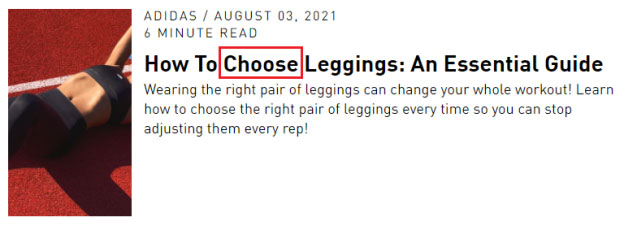
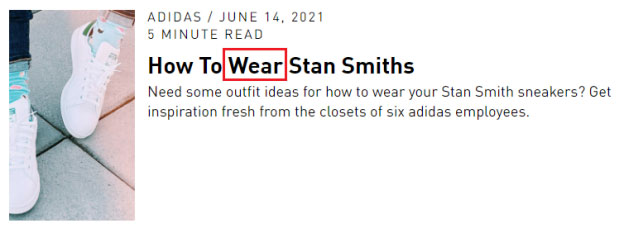
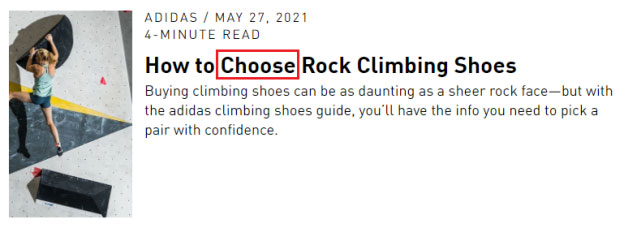

The verbs are strategically followed by their products (leggings, Stan Smith sneakers, climbing shoes, running, shoes).
This is how you check this strategy off the list like a seasoned pro!
Recommended Read: Blog vs. Article: What Is the Difference?
2. It’s All About the CTA (Call-to-Action)
When it comes to creating content that converts leads into customers, a strong CTA (call-to-action) isn’t just useful, it’s imperative.
A CTA is a short text (2–5 lines) that compels web users to take action.
If you’re writing a blog, power blog, article, guest post, or any other type of content that goes on your site or a third-party site, the CTA should generally be included at the end.
If you’re working on a product/service page, the CTA can be included in the form of visual elements.
For social media posts, the CTA can be included in the beginning or towards the end.
Here’s the catch.
While CTAs follow a similar rhythm for the most part, they can’t be generic or predictable.
Instead of incorporating a boring CTA into your content, make sure it a) carries conversion potential, b) is engaging, and c) is expertly optimized.
Here’s a closer look at a power-packed CTA from Adidas’ recent blog:
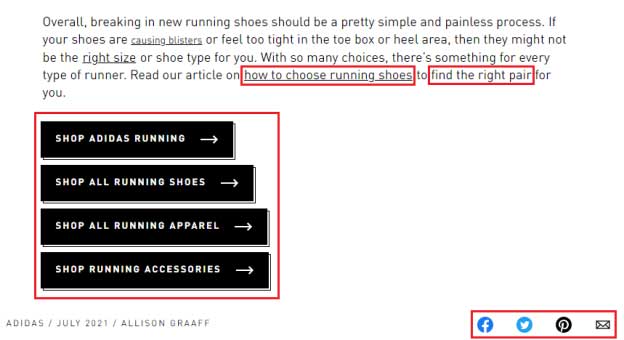
Notice how the CTA comprises high-converting keywords (“choose” and “find” are the guiding verbs here).
It also includes visual elements that lead web users to Adidas’ relevant collections.
In fact, they’ve gone the extra mile by linking their social media pages and email below (bottom right).
This is one hell of a CTA!
The keywords are hyperlinked, the visual elements are as eye-catching as it gets, and the transition from the rest of the content to the CTA is seamless.
The goal is to compel your audience to take positive action without them realizing what’s happening.
A cheesy CTA that’s easily detectable can be extremely off-putting. Your audience will know right away that you’re trying to “sell” something.
This isn’t something they should be able to pick up on; the transition should be undetectable and natural.
Adidas gets this balance just right.
If you want to create content that converts, make sure your CTAs aren’t overly promotional. They should also be expertly optimized using the right keywords (refer to the first section of this blog for more insight) and internal links.
Your goal is to prompt positive action without making it painfully obvious. It takes a while to get this roundabout content writing style just right.
If you’re struggling, we recommend consulting a team of professional blog writers.
Got the CTA or keyword blues? Our content marketing pros can help. Fill out the form below to start converting leads into customers through content!
3.Write Sales-Driven Content
We’ve covered the basics: keywords and CTAs; they form the foundation of good content.
However, creating “good content” atop a firm foundation is the bulk of the job.
One misstep and you could end up damaging the foundation and going back to square one.
In other words, this is where the real work begins.
If you write unengaging, boring, and banal content, your audience will “bounce,” thereby increasing your site’s bounce rate.
At the very most, you’ll manage to convert web users into leads. However, you’ll struggle to convert leads into loyal customers that stick around in the long run.
To check this important box off the list, write sales-driven content.
Not only that, but your content should also be highly engaging, value-added, and insightful.
As the name suggests, sales-driven content is content that generates massive sales. It’s written with the intention of informing, engaging, and converting your target audience.
Start off by taking a deep dive into your audience’s interests and preferences. This is the first step to creatingcontent that converts.
As you understand what your audience is looking for, you’ll manage to choose the right topics for your content.
We strongly recommend sectioning off your audience demographically.
For instance, if you run an apparel store, identify the specific age groups you create clothing for. As you split these groups into different categories, you can work on creating content for each category.
American Eagle does this brilliantly. As a result, their content isn’t generic; it’s actually highly specific.
The outcome? They’ve managed to convert each demographic into long-term customers.
Here’s an example of their recent blog:
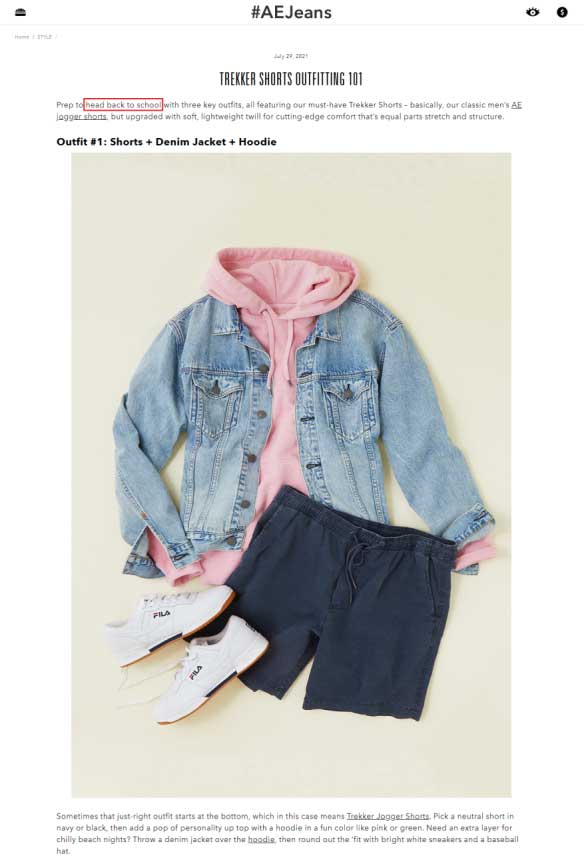
Notice how they’ve targeted their younger demographic, i.e., teenagers who are returning to school this year.
Once you’ve sectioned off your audience, start selecting relevant themes, topics, events, and social media trends that pique their interest. In other words, look for ideas to create content that they’ll actually read.
Tonal’s relevant blogs are a great example of putting this strategy into practice the right way!
Instead of choosing generic topics, they delved deeper and carefully selected topics that their audience was actually interested in.
For instance, they wrote an insightful, empowering, and deeply moving blog during Pride Month.
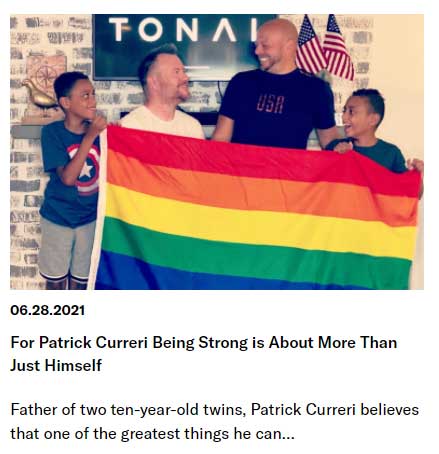
The brand also celebrated and emphasized the true meaning of independence by posting a powerful blog on Juneteenth.
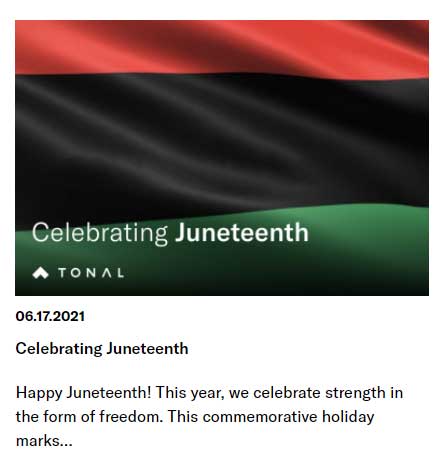
Writing sales-driven content on topics that resonate with your audience shows that you care about their interests, representation, and using your platform for good.
Today, people are increasingly looking for brands that go the extra mile to value customers, not just generate massive revenue.
As a brand, you should have a razor-sharp focus on showing your audience that they’re more than just a number to you.
As you build a strong brand identity, you’ll simultaneously manage to convert leads into customers.
Your audience will feel acknowledged, accepted, celebrated, and included.
This feeling makes customers feel special. It shows them that brands care about who they are and what they stand for.
As you create content for different demographics, you’ll manage to capture their interests and show them that you’re committed to offering more than just a great product/service.
This extra step is also known as “humanizing the content”, i.e., adding an element of humanness and empathy to web content.
When combined with high-converting CTAs and keywords, humanized content helps brands rank higher, generate more traffic, convert web users into leads, and convert leads into customers.
Postmates is also known for creating content that centers their audience. Here’s a glimpse of their audience-centric blogs:

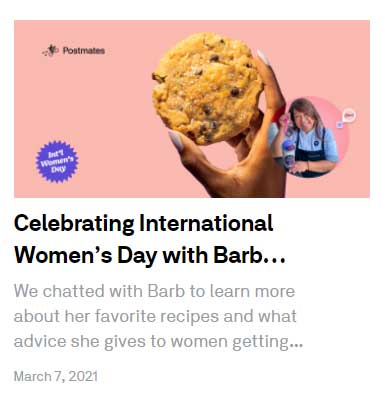
Recommended Read: How To Write A Blog That Ranks
4.Showcase Testimonials on Your Web Pages and Social Media Pages
According to research, a whopping 84% of web users trust online reviews. That’s a lot by any measure.
In fact, 80% of people change their minds after reading a positive or negative review.
As an up-and-coming or even established business, you can actualize impressive growth by doubling down on testimonials.
Here’s why this is so important.
Presently, large majority of brands have a separate testimonial page that lists their online reviews.
While this is a great approach, it’s not enough.
The human attention span is incredibly low: a measly eight seconds.
It’s unlikely that your customers will explore every single page on your site.
In most cases, customers never end up on the testimonial page, which delays the process of trusting a brand.
Undo the damage by showcasing your testimonials on multiple pages across your site, especially your product/service pages and blogs.
If you explore Nike’s product pages, you’ll notice that each page features reviews for the respective product. Here’s an example:
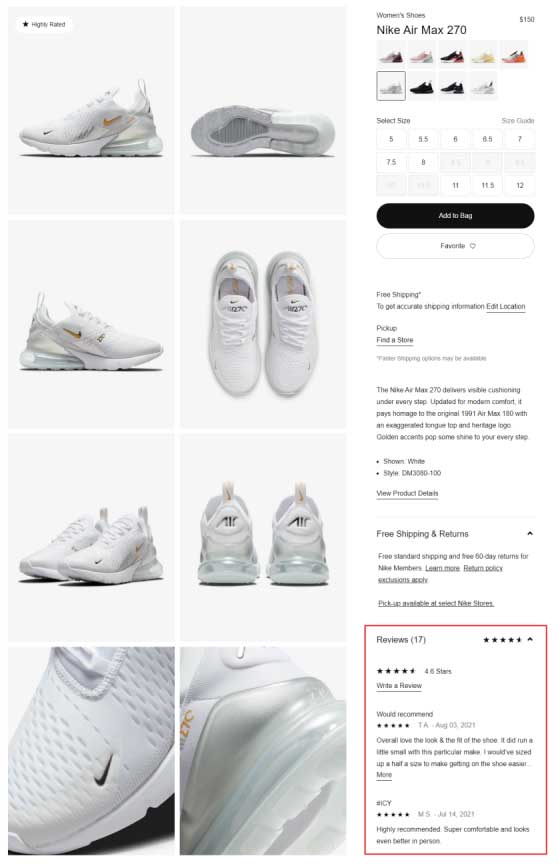
A lot of brands use a similar approach for non-product/service pages.
Let’s say you manufacture sporting equipment and choose to write a blog on the best footwear for an arduous hike.
As you showcase some products that you have in stock, you can include reviews for each product towards the end of the blog.
This is a great way to compel your audience to buy said products.
Testimonials are extremely powerful. They carry the ability to form a person’s opinion and eliminate doubt.
By incorporating them into web content and even social media content, you can nudge your audience in the right direction: potentially buying your products/services and becoming long-term customers.
Lacoste is known for frequently replying to and retweeting posts from customers. While these aren’t “reviews” in the traditional sense, they still count as testimonials.
By interacting with these posts, Lacoste expertly ensures that they gain more traction.
Here’s an example:
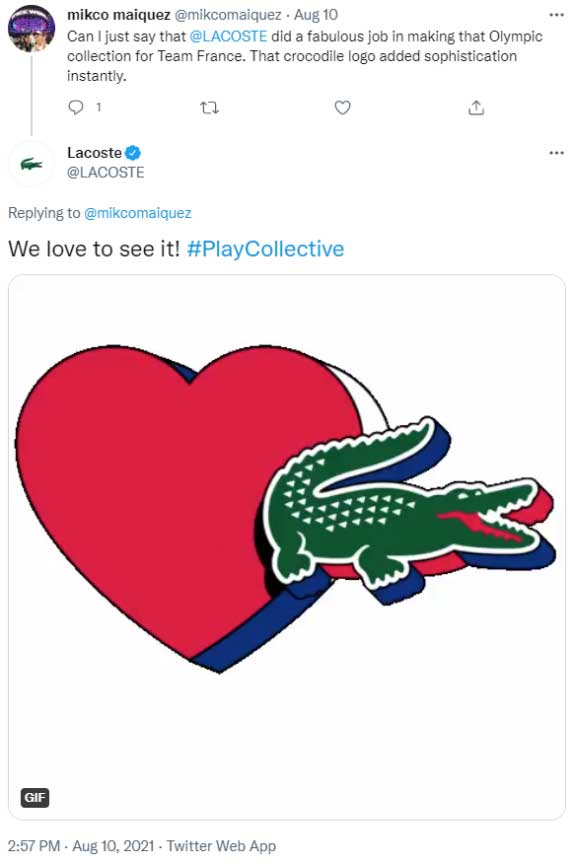
The tweet will show up on Lacoste’s page since they’ve responded to it. It’ll also gain more traction as it earned a response from a verified page.
Lacoste’s social media marketing team has an excellent understanding of how the Twitter algorithm works. By using it to their benefit, they’re brilliantly showcasing positive online reviews on social media!
Target is known for using the same approach:
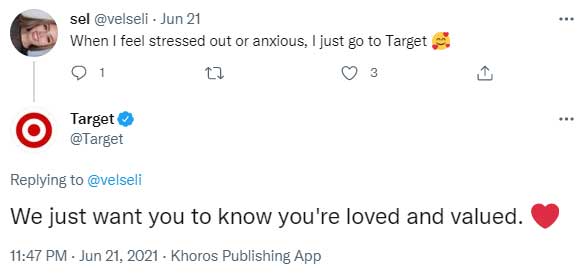
Whether customers appreciate your products, services, in-store shopping experience, customer support team, or any other facet of your brand, consider it a win and highlight it!
As more customers interact with flattering social media posts or web reviews, they’ll become loyal customers that stick around in the long run.
This is a tried-and-tested way of converting leads into customers through content (both web content and social media content).
5. Avoid Inconsistency and Redundancy
Many brands are guilty of falling into the all-too-familiar traps of inconsistency and redundancy.
As you start creating content, you may reach a point when you simply can’t think of new topics.
When this situation arises, some brands become inconsistent with content creation (i.e., they start posting less frequently) while others resort to redundancy (i.e., they recycle the same ideas and present them differently).
These avenues can be extremely dangerous for your brand, especially if you start relying on both of them at once.
The sooner you identify these habits, the better.
As you start undoing the damage in due course, you can prevent customer attrition/loss.
If you take action a little too late, you may have already lost a significant number of customers.
It’s important to note that consistently creating fresh content is one of the easiest ways to convert leads into customers. This is why nipping inconsistency and redundancy in the bud is so important.
If you’re short on ideas, turn to Google Images for help!
Let’s say you offer massage therapy services in Atlanta, Georgia. As you enter “massage therapy” in the search bar, Google will fetch a lot of suggestions for you.

These tags are closely related to your search query. In other words, web users are actively searching for these terms as they’re looking up “massage therapy” on Google.
Use these suggestions to your advantage by building new connections and creating fresh, relevant, and engaging content.
This strategy is extremely useful because you’re relying on Google’s whip-smart algorithm, which already knows what’s relevant and what’s not.
It’s doing the work for you!
Instead of manually searching for new topics that may not be as relevant, you can opt for this route to find the most relevant topics for new content.
Once you’ve used up all your connections, click on individual tags to unearth a plethora of new terms.
This cycle is never-ending. It’s one of the best ways to write new content that doesn’t bore your audience.
In addition to employing this strategy, we also recommend reaching out to your audience for help.
Simcenter, a branch of the renowned brand Siemens, recently reached out to their audience on Twitter. They requested more insight into the specific kind of content their audience was seeking: videos, infographics, live webinars, or blogs.

You can leverage the same strategy but get a tad more specific!
Ask your audience to list the specific topics they’d love to read content on.
Make use of Twitter’s inbuilt features (polls, etc.) to further increase engagement.
You can also keep the post more open-ended by requesting your audience to share their ideas in the comments.
This is a great way to feed two birds with one scone!
Not only will you manage to fill your proverbial “content marketing” bags with new ideas, but you’ll also get a chance to increase your social media engagement.
It’s a win-win!
Here are some more great examples to help you start off on the right foot:
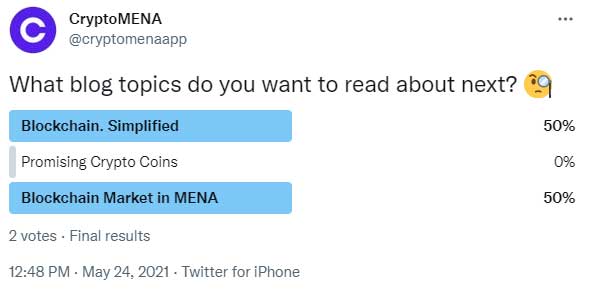
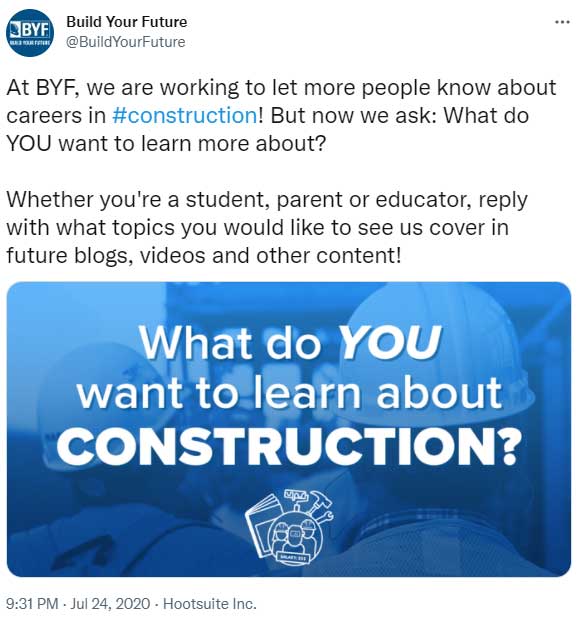

6. Replace Loud Pitches with Softer Nudges
Think back to marketing in the 2010s.
Whether you were watching a TV commercial, reading a blog, or browsing through a company’s products/services, you would have been bombarded with statements like:
- “What are you waiting for? Buy now before it’s too late!”
- “You can’t miss out on our sale! We’ve got the best toasters in town, grab ‘em now!”
- “$20 off? Go, go, go! It doesn’t get better than this, start shopping now for the best in interior décor!”
While these pitches may not seem too loud at first, they can easily overwhelm you once you come across two, three, five, or even ten each day.
This was marketing in the 2010s in a nutshell. It was loud, excessively promotional, cheesy, and downright gimmicky.
In the 2020s, we’ve transitioned from loud pitches to softer nudges. While you may think the latter aren’t as effective, they’re actually better at converting leads into customers.
Today, people are on the hunt for content that informs, educates, and solves their problems.
Flashy lights, gaudy props, cheesy headlines, and an excessive sense of urgency aren’t appreciated anymore.
Instead, customers would rather read content that includes practical insights, useful tips, and fresh ideas.
As a rule of thumb, steer clear of loud pitches. They do more harm than good and may compel your audience to start looking elsewhere.
Dyson’s blogs are a great example of putting value over heavy promotion.

You can still include a well-placed CTA in your content. However, focus on writing quality content to make a great impression on your audience.
Not only will people stick around until the very end, but they’ll also take positive action in response to the great content that was provided.
And if your content features testimonials towards the end, well, you’ve checked off all the boxes!
Wrapping Up
In this blog, we walked you through six steps to writing content that converts. As you put these strategies into practice, make sure you prioritize quality every step of the way.
When woven into content strategically and seamlessly, soft nudges can compel action and convert leads into loyal customers.
As you work towards strengthening your brand identity, you’ll also manage to retain customers who were considering partnering with a different brand.
At Global-marketing Inc., our content marketing team has extensive experience in using high-converting keywords that generate leads and drive sales. We write sales-driven content that reels in a big chunk of your audience!
We’re committed to helping you stand out in your industry and make big splashes through high-quality content.
If you’re ready to get started, we can help. Give us a call at +1(833)405-1025 to kick-start your content marketing strategy!












